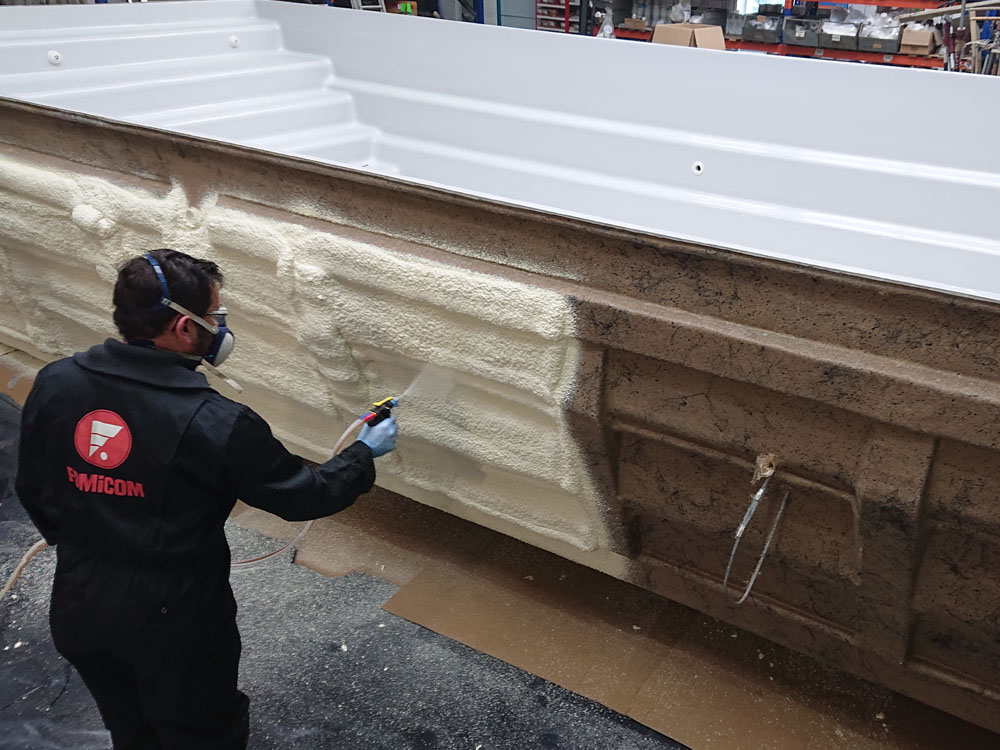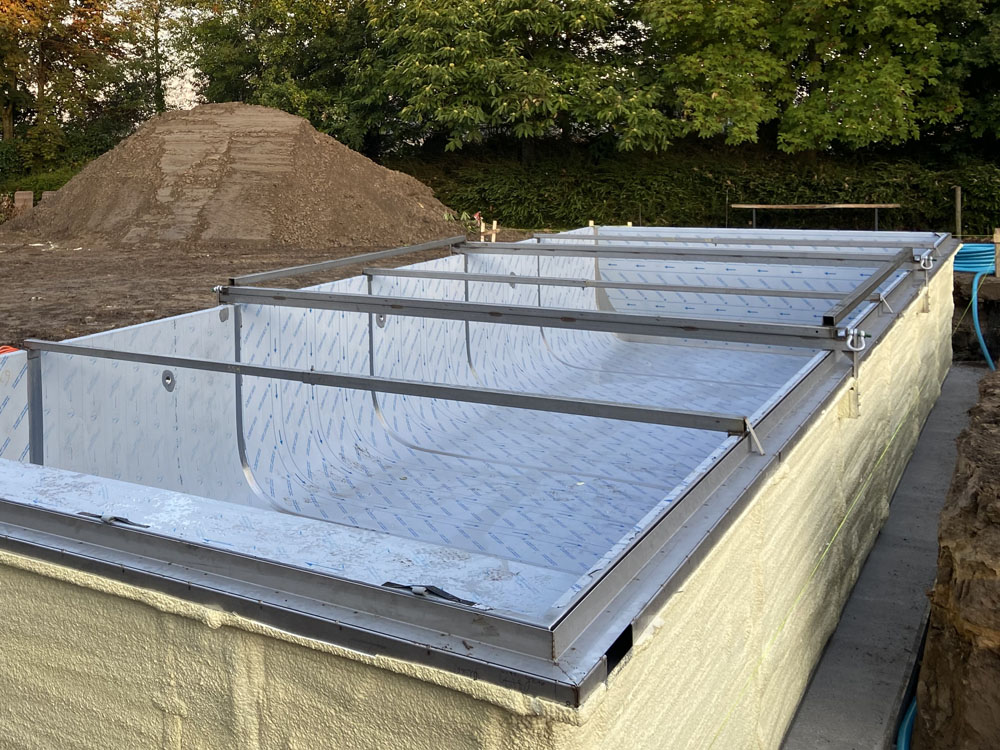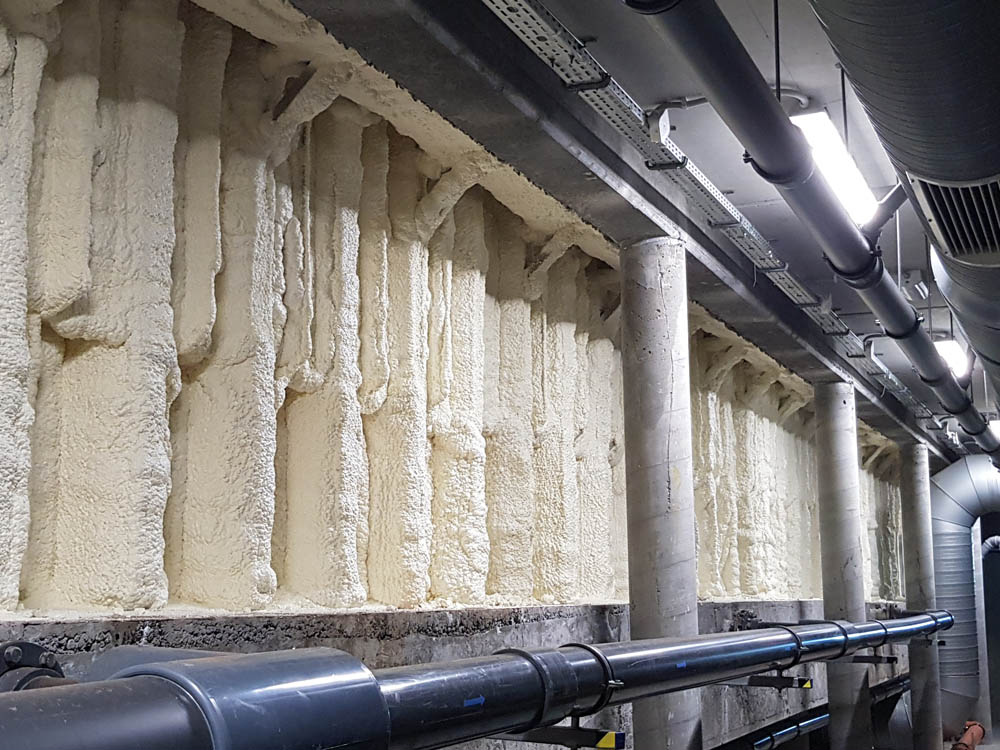POOL INSULATION
By insulating the sides of a swimming pool, the water will maintain its temperature longer and cool down less quickly. A 5 cm layer of insulation will reduce energy costs by 60-70%. The heat generated, and thus energy, is kept in the pool and is not lost along the walls. The insulation foam can be easily and quickly sprayed against the outside of the swimming pool sides, forming a hermetically sealed unit. The insulation material is waterproof so it cannot absorb moisture. A sustainable solution that on the one hand ensures pleasantly warm water that does not cool down quickly, and on the other hand an immense reduction in energy costs that is needed to keep the water at the right temperature.
JACUZZI INSULATION
Our sprayfoams are used in the production of whirlpools, as well as during the reparation process. The insulation foam reduces the energy costs to keep the water at the right temperature, and the foam is also used as fixation for the hoses, and to reduces noise.
NOTE: insulating the walls is only useful in combination with a high-quality cover, just as insulating a roof is only useful if you keep your windows closed
Advantages
- decrease in energy costs
- waterproof insulation
- sustainable HFO sprayfoam
- high insulation value (0,022 W/mK)
- fast and easy system
- for any type of pool

inox
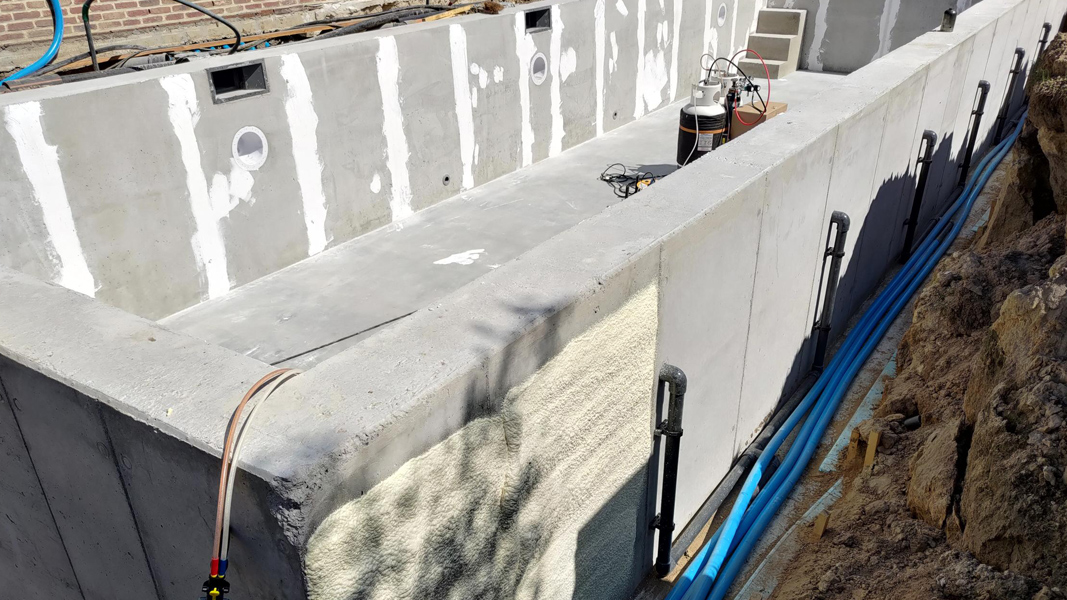
concrete
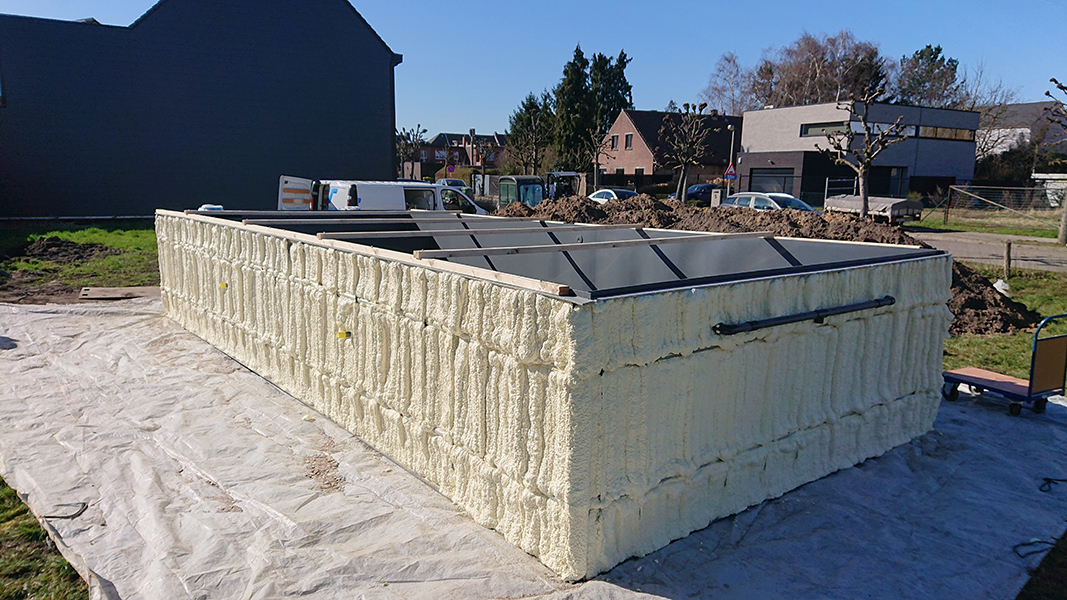
HDPE
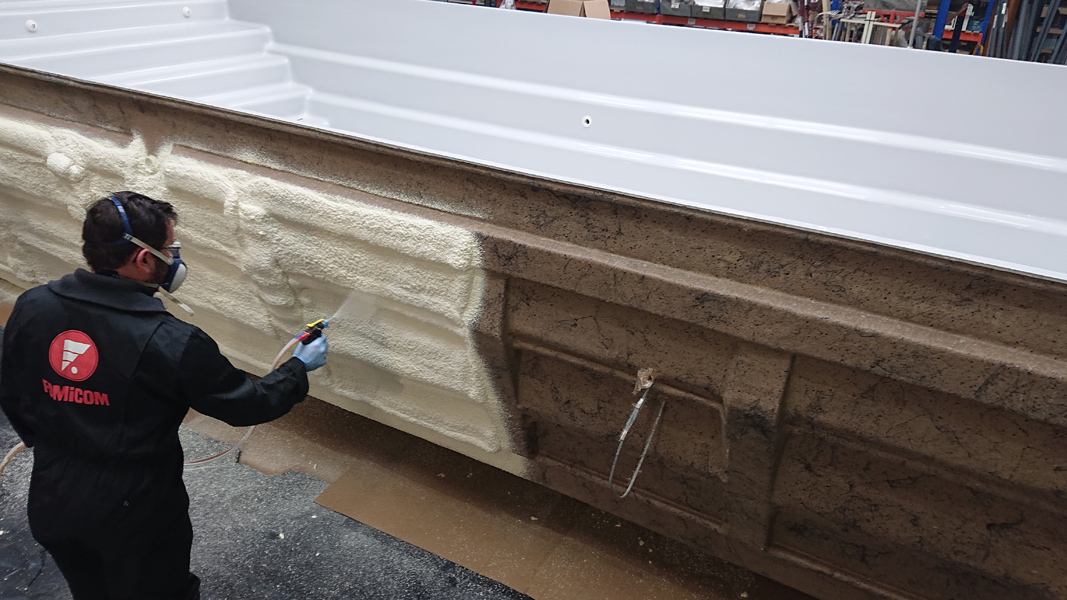
polyester & vinylester
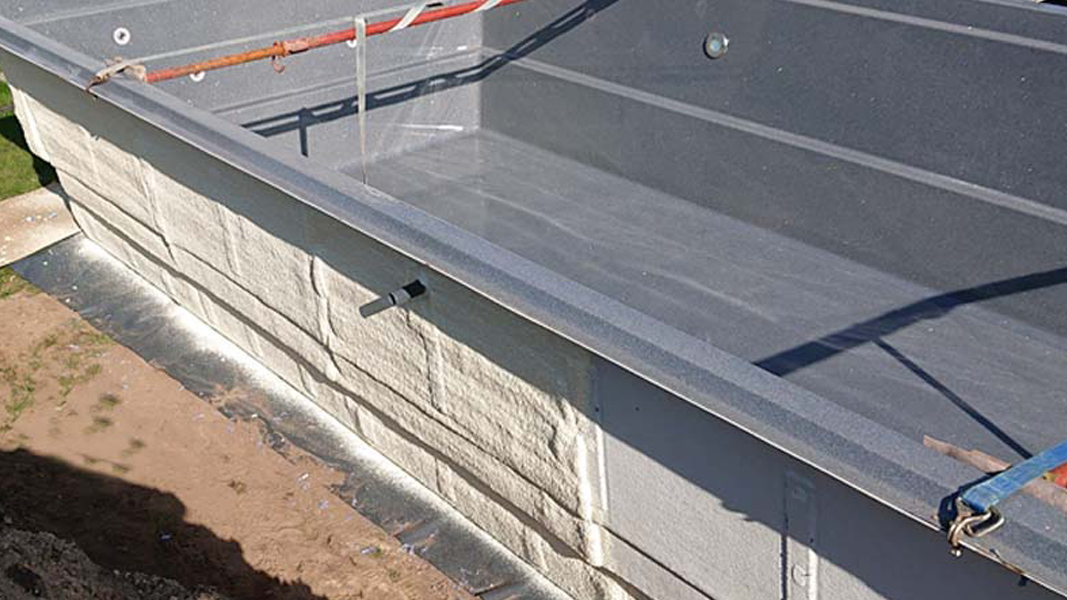
polypropelyne
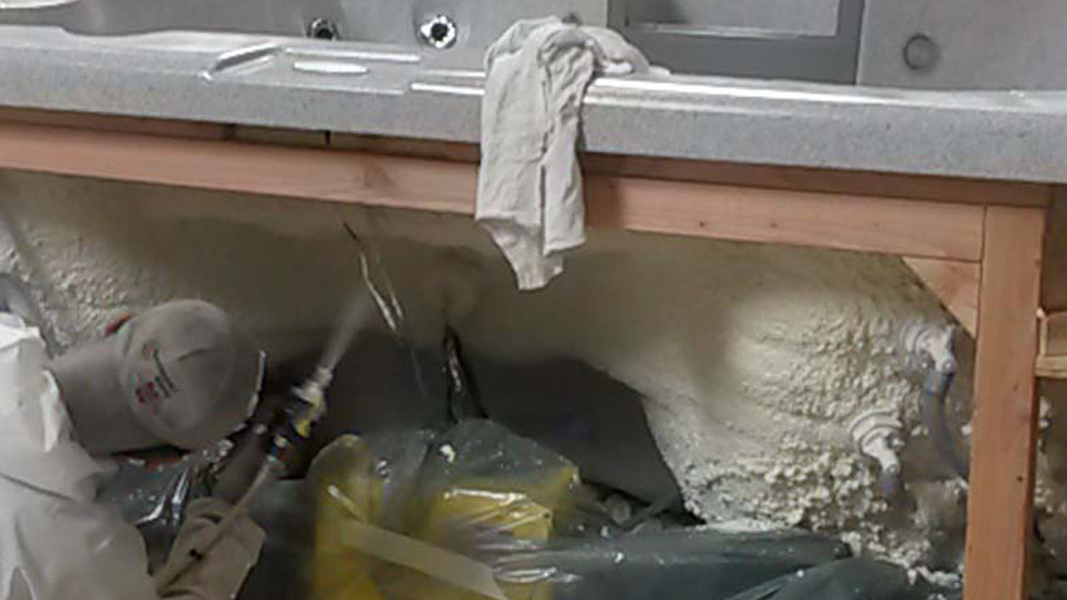
whirlpool
TO MEASURE IS TO KNOW
The advantages of pool insulation explained.
With the insulation foam sets, we want to minimise energy loss. Specifically, the walls of a standard swimming pool comprise some 40 m2 through which energy is lost. Unless we can ensure that our pool walls no longer allow this heat to pass through.
1. Does your pool material insulate?
The answer is NO. The common pool materials such as concrete, inox, polyester, HDPE,…are not known for their insulation characteristics. If the manufacturer claims that some kind of an insulation layer is provided in the construction of the monobloc, you should ask for a Lambda value of this specific insulation layer, and establish that they cannot provide it.
Swimming pools come in different sizes and shapes, and also in different materials. These include HDPE, concrete, stainless steel, polyester or vinylester, etc. Each specific material has its own Lambda value. This is the heat conduction coefficient, and thus the extent to which the material allows heat to pass through. The lower this Lambda value, the better the material insulates. Here we see the Lambda values of the different types in a row.
- Inox: 14 W/mK
- Concrete: 1,70 W/mK
- Polyester: 0,05 W/mK
- Vinylester: 0,25 W/mK
- HDPE: 0,50 W/mK
- Polypropylene: 0,15 W/mK
- PU-foam: 0,022 W/mK
2. Thermal resistance of a swimming pool
If we also take into account the thickness of the pool wall in its specific material, we arrive at the R-value. This is the thermal resistance, and thus describes how well the material resists transporting heat.
The higher this value, the better.
- Inox: 0 m²K/W (1 cm mass of matter)
- Concrete: 0,18 m²K/W (30 cm mass of matter)
- Polyester: 0,2 m²K/W (1 cm mass of matter)
- Vinylester: 0,04 m²K/W (1 cm mass of matter)
- HDPE: 0,02 m²K/W (1 cm mass of matter)
- Polypropylene: 0,07 m²K/W (1 cm mass of matter)
- PU-foam: 1,67 m²K/W (5 cm mass of matter)
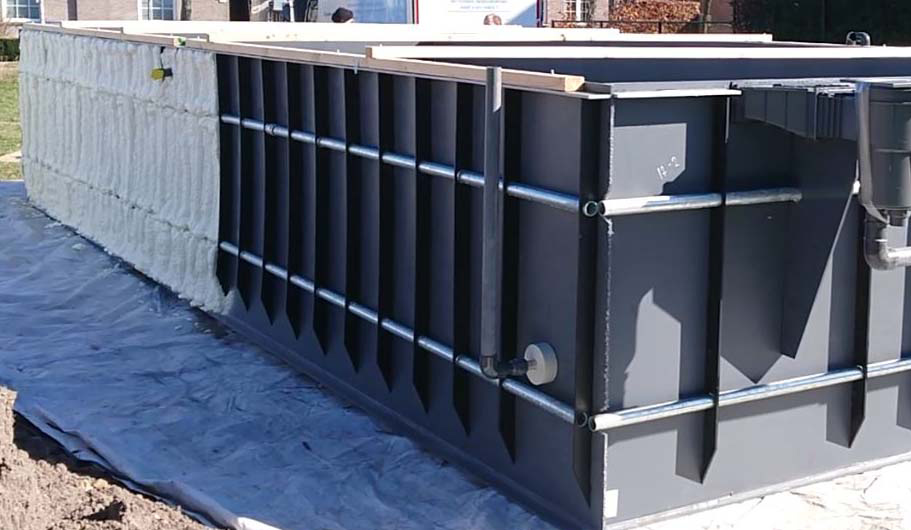
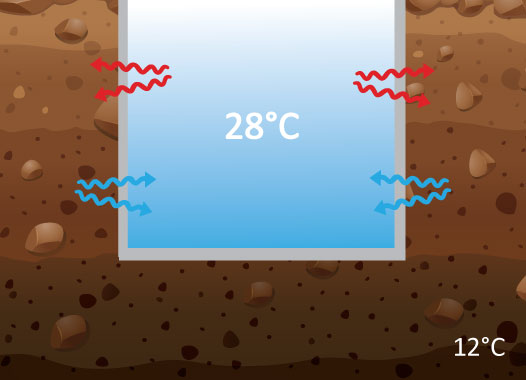
Pool without insulation
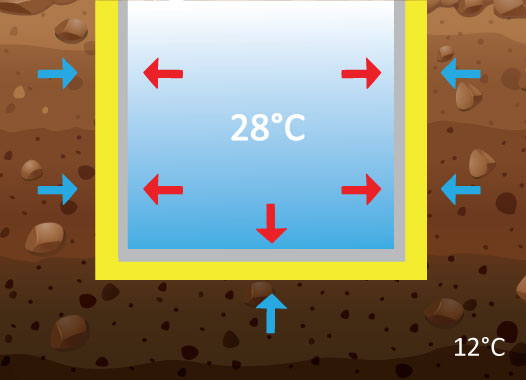
Pool with insulation
3. How much energy is lost when your pool is not insulated?
If we now look at how much energy is lost per square metre, and per degree difference, we arrive at the U-value. This value indicates thermal conductivity and should be as low as possible. After all, a low value means that little energy is lost. If we compare the values below, we see that 5 cm of PUR foam drastically reduces the U-value of all types of swimming pools. Whereas for a concrete pool the energy loss is 170 W/m2K, this changes to 0.6 (!!!) W/m2K because the insulation foam was applied. And less energy loss is good for the wallet…
- Inox: 1400 W/m²K
- Concrete: 170 W/m²K
- Polyester: 5 W/m²K
- Vinylester: 25 W²/mK
- HDPE: 50 W/m²K
- Polypropylene: 7 W/m²K
- PU-foam: 0,6 W/m²K

Less energy needed = saving money
Not only will the pool water heat up faster at the beginning of the season, less energy will also be needed to maintain the water temperature during the summer months. The one-off insulation cost is offset by long-term energy cost savings. Given ever-rising energy prices, this is a nice extra that will benefit you for years to come.
The U-value, the thermal conductivity, comes down to the wattage lost per m² per degree Celsius temperature difference. With a bottom of 12°C, and pool water of 28°C, the difference is 16°C. For an uninsulated pool with 50 m2 of walls, this equates to a continuous heat loss of (50 m2 x 16°C) x 5 = 4000W (where 5 is the U-value of the uninsulated polyester).
With an insulated pool, this loss is (50 m2 x 16°C) x 0.5 = 400W. The insulation layer 5 cm of PUR foam therefore reduces the wattage needed to keep your pool at temperature by 3600W. Assuming no other losses (from evaporation) and gains (from sunlight), this means 24 x 3.6 kW = 86.4 kWh less loss. At a rate of €0.38/kWh (april 2023 – Belgium), this comes to a daily saving of €33. Of course, there is the influence of the sun in summer which compensates for heat losses during a heat wave but during the off-season this calculation applies. Other measures such as a qualitative cover also contribute significantly to reducing additional heat losses.

A layer of 5 cm PUR foam ensures that the thermal conductivity at any type of swimming pool material decreases to 0.6 W/m²K.
Specifically, virtually no heat is lost through the ± 40 – 50 m2 walls.
DID YOU KNOW?
Soil temperature
The soil temperature is around 12°C all year round. Only the first 40 cm of the earth’s surface will warm up in summer. Deeper than 40 cm, the temperature remains quasi constant all year round. If we heat the pool water to 28°C, there is as much as 16 degrees difference between the soil and the pool water. Without insulation on the sides of the pool, the heat of the water passes through the walls and will heat up the soil, and on the other hand the soil will cool down the pool water.
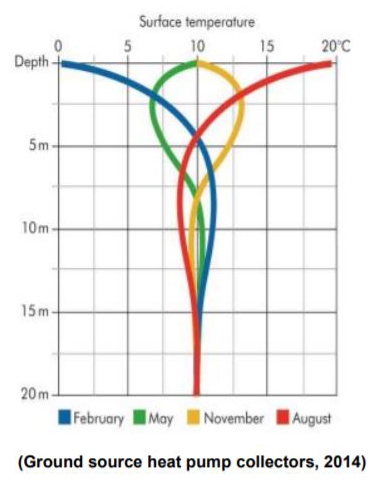
4. How to insulate a pool?
The insulation foam must be sprayed on a dry surface. This will ensure good adhesion. Moisture or condensation at the time of application may prevent the foam from adhering to the surface. The surface can be dried with a cloth or by using a heat blower. A second consideration is that the surface must be dust and grease-free. This too for good adhesion.
It is recommended to apply an initial adhesive layer. To do so, move the gun quickly and from a distance over the surface so that a mist layer is applied with parts of the surface still visible through the foam. Let this cure for a few minutes. As soon as you can touch the foam and it no longer sticks to your glove you can start applying the first real layer of PU-foam.
For any professional, no machine needed
The Froth-Pak system is used by swimming pool installers who insulate their pools. They can do this either in their own premises, or on site at their end customer’s premises. Insulating the pool can be completed in an hour and a half. Private individuals wishing to insulate their pools can have their pool installer contact us, or approach Fomicom directly.
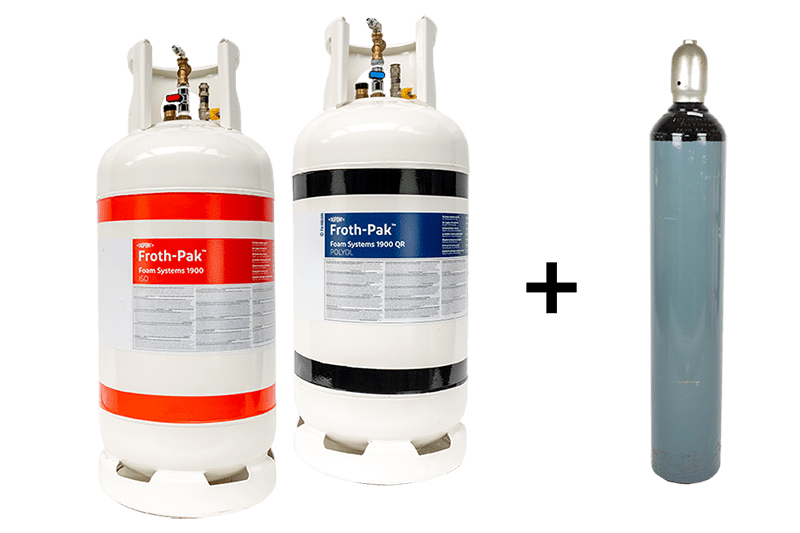
Froth-Pak 1900 system
- Yield: 80 m2 at 5 cm thickness
- Refillable cilinders
- No external source needed
- Fast & easy system
- Waterproof and high insulating foam (0,022 W/mK)
- 12 months shelf life
Or contact us directly at:
Insulation foam vs panels
When insulation foam is sprayed against the walls, a seamless and hermetically sealed shell is created through which groundwater cannot pass. This is different from insulation panels, for example, where there are still seams and gaps through which groundwater can infiltrate. These are thermal bridges that should be avoided.
After all, an insulation is only as strong as its weakest link. However, a layer of insulation foam can be sprayed on top of the panels to ensure that all seams and cracks are filled and covered. This also benefits the structural strength of the whole. The sprayed insulation foam is a closed-cell foam which makes it unable to absorb moisture. Note that this is not the case with every type of PU foam. It is important to check the technical data sheet and look up the percentage of closed cells.
